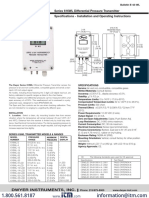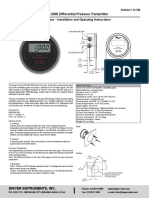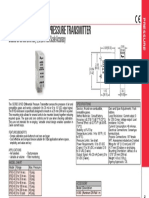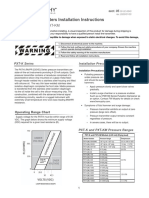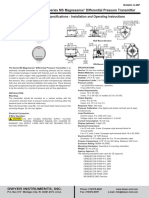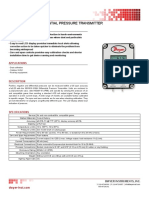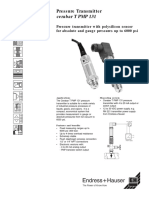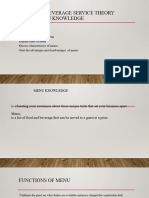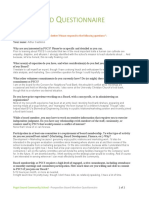0% found this document useful (0 votes)
40 views4 pages616D Manual
The SERIES 616D DIN Rail Differential Pressure Transmitter measures air and compatible gas pressure, providing a 4 to 20 mA or 0 to 10 VDC output. It is designed for installation on a 35 mm DIN rail and features adjustable span and zero controls for calibration. The device operates within specified temperature and pressure limits and requires careful electrical connections to ensure proper functionality.
Uploaded by
Geraldo BarbosaCopyright
© © All Rights Reserved
We take content rights seriously. If you suspect this is your content, claim it here.
Available Formats
Download as PDF, TXT or read online on Scribd
0% found this document useful (0 votes)
40 views4 pages616D Manual
The SERIES 616D DIN Rail Differential Pressure Transmitter measures air and compatible gas pressure, providing a 4 to 20 mA or 0 to 10 VDC output. It is designed for installation on a 35 mm DIN rail and features adjustable span and zero controls for calibration. The device operates within specified temperature and pressure limits and requires careful electrical connections to ensure proper functionality.
Uploaded by
Geraldo BarbosaCopyright
© © All Rights Reserved
We take content rights seriously. If you suspect this is your content, claim it here.
Available Formats
Download as PDF, TXT or read online on Scribd
/ 4






